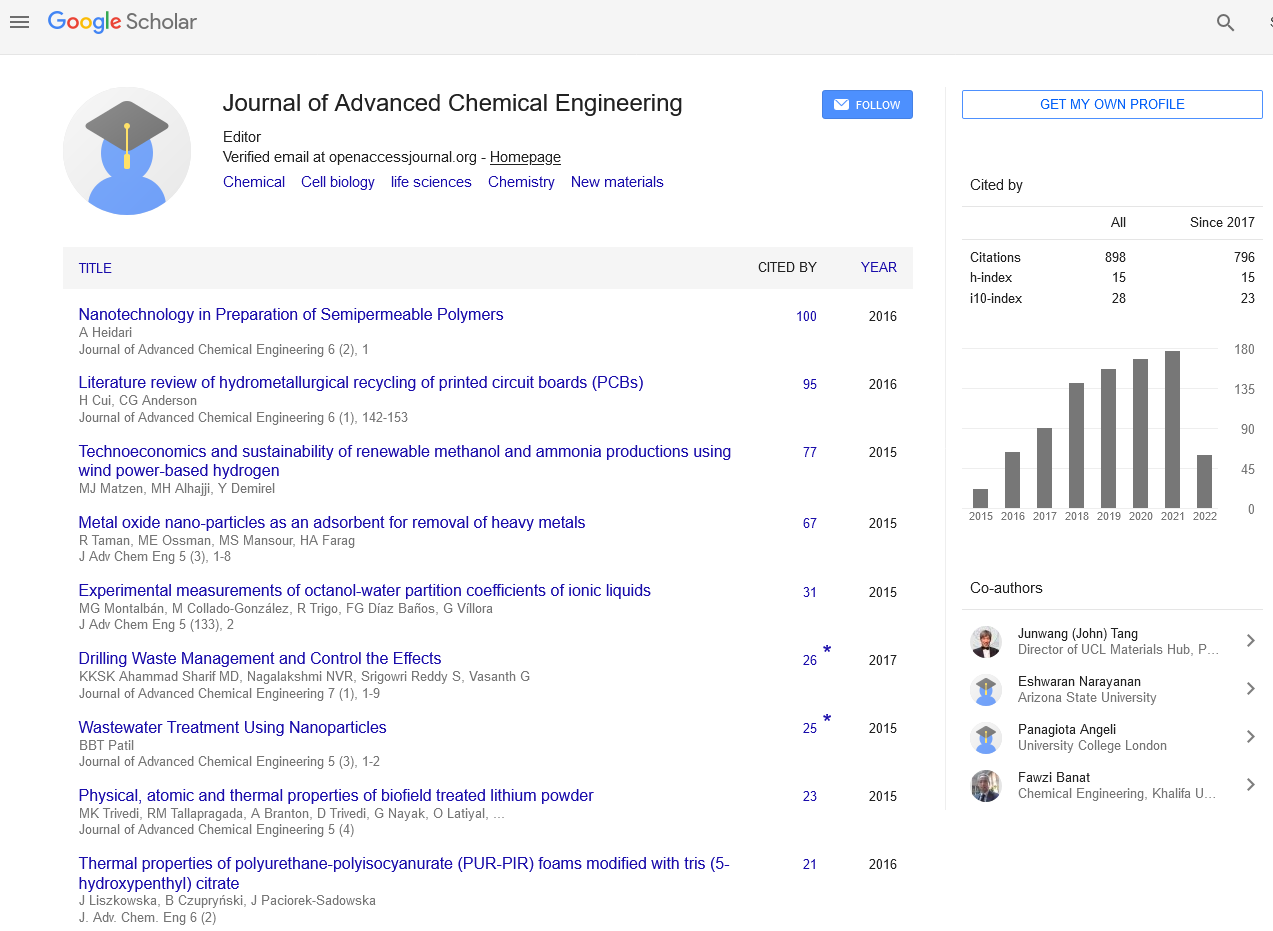Indexed In
- Open J Gate
- Genamics JournalSeek
- Smithers Rapra
- RefSeek
- Directory of Research Journal Indexing (DRJI)
- Hamdard University
- EBSCO A-Z
- OCLC- WorldCat
- Scholarsteer
- Publons
- Geneva Foundation for Medical Education and Research
- Google Scholar
Useful Links
Share This Page
Journal Flyer

Open Access Journals
- Agri and Aquaculture
- Biochemistry
- Bioinformatics & Systems Biology
- Business & Management
- Chemistry
- Clinical Sciences
- Engineering
- Food & Nutrition
- General Science
- Genetics & Molecular Biology
- Immunology & Microbiology
- Medical Sciences
- Neuroscience & Psychology
- Nursing & Health Care
- Pharmaceutical Sciences
Abstract
Blood Wettability of Haemocompatible Carbon-based Materials
The carbon haemocompatible substrates represent an important group of biomaterials due to their possibility to be used in direct contact with the blood for long times without produce thrombus and dysfunctions of the blood flow in which the biomaterial is immersed. Between the different materials used, the carbon assumes a very significant role for its high capacity of haemocompatibility and physical properties. The wet ability to some biological liquids and blood in different biocompatible material surfaces is investigated for comparison with carbon based surfaces and to distinguish hydrophilic from hydrophobic behaviours. The interest concerns materials based on carbon actually used mainly in orthopedic, dental and cardiovascular applications. A relation between wetting ability and surface roughness is studied to optimize the case of high hydrophilic, employable for cell adhesion and growth, from high hydrophobic characteristics, useful for blood flow vessels and for parts of mobile prosthesis.


